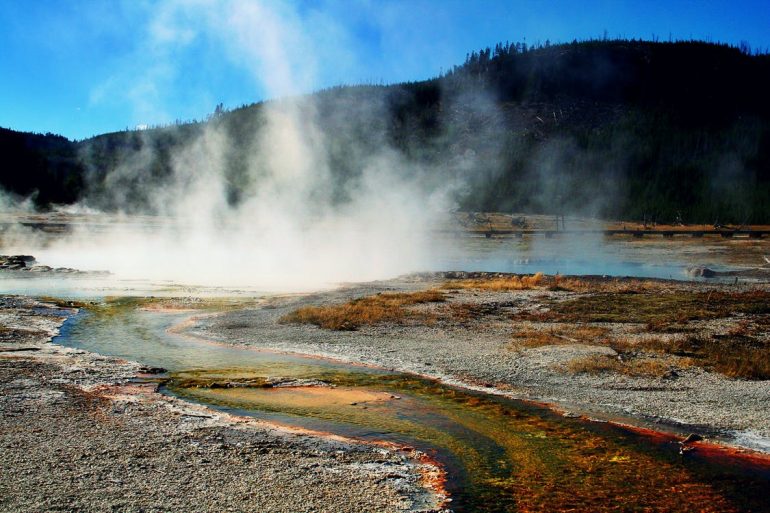
Geothermal energy is a fantastic renewable energy. Geothermal energy is stored energy in the Earth’s crust that can be used to generate power as well as heat and cool spaces.
Geothermal energy is the heat that comes from the earth and is a free, renewable, clean, and sustainable source of energy that can fulfill the world’s growing energy demands. Despite the vast potential of its energy resources, Pakistan is energy-deficient and must rely significantly on hydrocarbon imports to meet its basic needs. Furthermore, because they are either too remote or too expensive to connect to the national grid, a huge portion of rural communities lack electrification services.
There are geothermal energy resources in 90 nations around the world, including Pakistan.
Wells are bored into underground reserves that are one to several miles down beneath the earth’s surface to create this form of energy. Steam and extremely hot water are brought to the surface in this manner, where they can be used in a variety of applications.
Geothermal energy is typically stored in hot water underneath. It’s impossible to take advantage of this energy source until hot water in the form of hot springs or steam makes its way through the Earth’s crust. We can, however, finally make use of this energy thanks to geothermal technology.
A dry steam geothermal power plant is the most popular form nowadays. Underground steam is sent through a turbine at the plant. As the steam travels through the system, it powers a generator that generates electricity.
A flash steam power plant is the second type. This one is a little trickier. Rather than using steam, a pump pumps hot fluid up to a surface tank. The fluid then cools and condenses into vapour. This vapour will run a generator in the same way as steam does.
A binary cycle geothermal plant is the last type. This plant likewise makes use of heated fluid from beneath the ground. It uses the hot fluid to heat a cooler fluid after pumping it to the surface. Heat transfer is the term for this process. When the cooler fluid reaches the boiling point, it transforms into vapour. The vapour then turns a turbine, which drives a generator, which generates electricity.
Technology has the ability to convert heat energy from underground water to electricity, and then store the excess energy in underground water. Geothermal energy storage, unlike other commonly used energy storage methods such as batteries, thermal energy storage, and solar energy storage, stores energy in subterranean groundwater.
Geothermal energy, unlike fossil fuels, does not require combustion and produces very low levels of greenhouse emissions. Geothermal power facilities, in many circumstances, produce no emissions. China has significantly increased the country’s energy capacity through large-scale building of new power plants, most of which are coal-fired.
The ground contains one of our planet’s non-polluting energy sources. This source is always available, regardless of weather or day/night cycles. Rainwater collects in enormous reservoirs after seeping through the earth’s surface. The water in the reservoirs is heated by the heat from the earth’s core.
Energy overproduction is unquestionably preferable to undersupply because it allows for expansion; yet, we must find innovative ways to utilize electricity.
